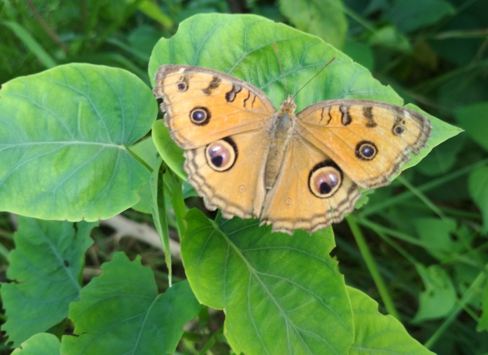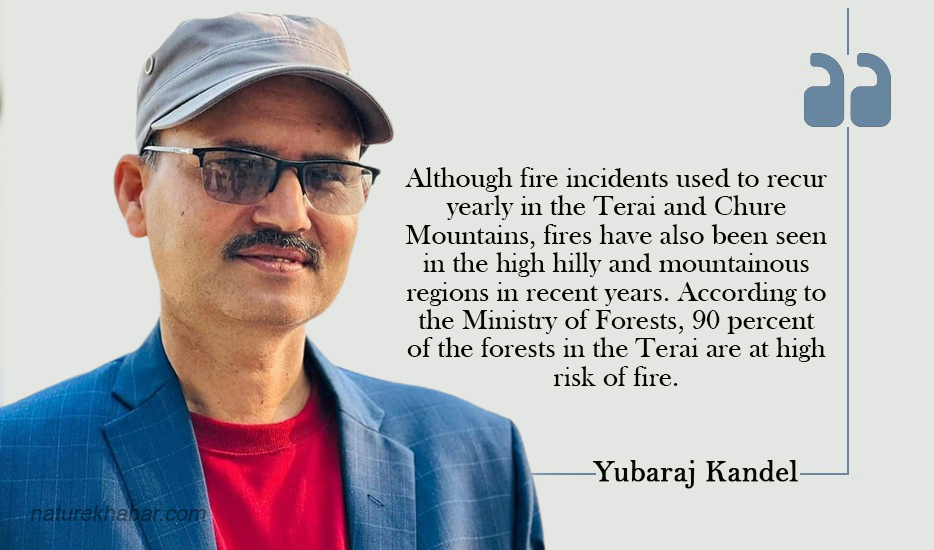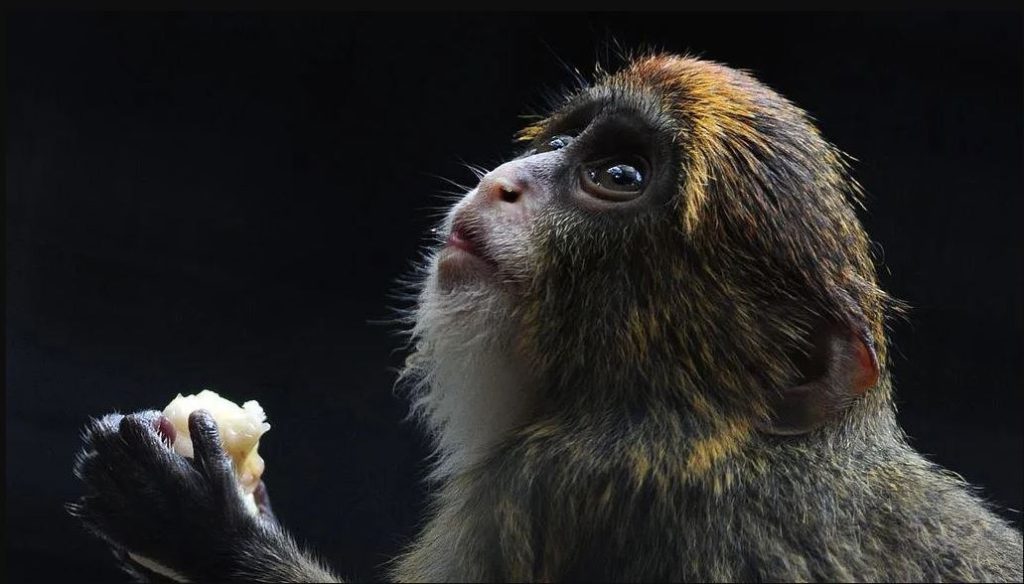Biodiversity – Life insurance for Sustainable development
- Deepak Ghimire

 Today, 22nd May, the globe is celebrating International Day for Biological Diversity with this year’s theme "Celebrating 25 Years of Action for Biodiversity" marking the 25th anniversary of the entry into force of the Convention on Biological Diversity and highlighting the progress made in the achievement of its objectives at the national and global levels. Recognized as an important aspect of sustainable development, sustainable use and conservation of Biodiversity has been an issue of major concern. Let us have some insights on Biodiversity and Sustainable Development.
Today, 22nd May, the globe is celebrating International Day for Biological Diversity with this year’s theme "Celebrating 25 Years of Action for Biodiversity" marking the 25th anniversary of the entry into force of the Convention on Biological Diversity and highlighting the progress made in the achievement of its objectives at the national and global levels. Recognized as an important aspect of sustainable development, sustainable use and conservation of Biodiversity has been an issue of major concern. Let us have some insights on Biodiversity and Sustainable Development.
Article 2 of the Biodiversity Convention defines biological diversity to mean: ‘The variability among living organisms from all sources including, inter alia, terrestrial, marine and other aquatic ecosystems and the ecological complexes of which they are part; this includes diversity within species, between species and of ecosystems.’ The different areas considered under biodiversity are Dry and sub-humid lands biodiversity, Agricultural biodiversity, Forest biodiversity, Inland waters biodiversity, Marine and coastal biodiversity, Mountain biodiversity, etc.
Biodiversity offers broad benefits for human needs, development activities and the nature as a whole. Biodiversity is the basis of existence, wealth of human and sustainment of nature on the earth. It encompasses multiple values and is vital for the production of food and to conserve the ecological foundations needed to sustain people’s livelihood. It offers opportunities for poverty eradication, human well-being and the livelihood and socio-cultural integrity of people. Biodiversity provides people with basic ecosystem goods and services. It provides goods such as food, fibre and medicine, and services such as air and water purification, climate regulation, erosion control and nutrient cycling. Biodiversity also plays an important role in economic sectors that drive development, including agriculture, forestry, fisheries and tourism. Many people depend directly on the availability of usable land, water, plants and animals to support their families. In fact, ecosystems are the base of all economies.
Sustainable development, according to the Brundtland Report of 1987, is the development that meets the needs of the present without compromising the ability of future generations to meet their own needs. Biodiversity is a key component of the “environmental health” pillar of sustainable development. Thus, we can say that biodiversity conservation and sustainable development are two inter-related branches focusing on social progress, economic growth and environmental protection on one side, and ecosystem conservation on the other. Specifically, biodiversity is a life insurance for Sustainable development.
Over the last few decades, biodiversity conservation has become one of the top priority environmental issues for the United Nations, and this very fact has pushed them to come up with measures. Conservation of biological diversity is the subject of Chapter 15 of Agenda 21 which was adopted at the United Nations Conference on Environment and Development, in 1992, in Rio de Janeiro. Kofi Annan, former General Secretary of United Nations has very well stated that "Failure to conserve and use biological diversity in a sustainable manner would result in degrading environments, new and more rampant illnesses, deepening poverty and a continued pattern of inequitable and untenable growth."
Realizing the issues of sustainable development and with a vision of better future United Nations has formally adopted the 2030 Agenda for Sustainable Development, along with as set of 17 bold new Global Goals. Sustainable Development Goal 15, and ecosystems and biodiversity more broadly, are directly relevant to the advancement of other SDGs. Targets associated with maintaining biodiversity and healthy ecosystems and underpinning biodiversity are included in Goal 14 and Goal 15, as well as in other goals and targets, including: SDG 1 (poverty eradication), SDG2 (hunger and food security), SDG 6 (water and sanitation), SDG 11 (cities and human settlements), SDG 12 (sustainable consumption and production) and SDG13 (climate action). In addition, a number of targets contained under SDG 15 relate to other SDGs. The Sustainable Development Goal 15 of the 2030 Agenda for Sustainable Development is devoted to “protect, restore and promote sustainable use of terrestrial ecosystems, sustainably manage forests, combat desertification, and halt and reverse land degradation and halt biodiversity loss”.
The global environment is presently under stress for a long list of reasons. The accelerating human population growth rate is leading to habitat degradation and destruction resulting in continuing loss of biodiversity. The adverse effects of climate change are being witnessed every day. At the same time, natural disasters are becoming more frequent and more devastating. Similarly, several developing countries have become more vulnerable to economic hardships and have several compelling reasons to mortgage their natural resources for debt relief.
The 2010 WWF Living Planet Report estimates that we’ll need the equivalent of two planets by 2030 to support human populations if we continue with our current consumption patterns. Biodiversity conservation is unlike any other sustainable development issue because loss of biodiversity is irreversible. Extinction is final and there is no second chance. Everything we eat, wear and produce on this planet Earth is ultimately dependent on its biodiversity. Indeed, there is little awareness in most urbanized societies that the food on the table is a product stemming from biological diversity. Extinctions of elements of biodiversity can disrupt vital ecological processes such as pollination and seed dispersal, leading to cascading losses, ecosystem collapse, and a higher extinction rate overall.
While progress towards sustainable development has been made through meetings, agreements and changes in environmental governance, real change has been slow. To effectively address environmental problems, policy-makers should design policies that tackle both pressures and the drivers behind them. In order to ensure sustainable development, it is necessary to conserve biodiversity and use it sustainably.
Biodiversity conservation in developing countries, like Nepal, has its own set of challenges. Not only are there natural issues, such as climate change and climate variability effects, but many local communities rely on the natural resources they harvest and hunt in protected areas. In these situations, it is especially important to ensure the management plans and technologies are considerate of community needs and capacities, and are endorsed by the affected communities. Efforts are to be made together to take effective and urgent action to halt the loss of biodiversity in order to ensure that by 2030 ecosystems are resilient and continue to provide essential services, thereby securing the planet’s variety of life, and contributing to human well-being, and poverty eradication i.e. sustainable development.
Ghimire is a B.Sc.Agriculture graduate from Institute of Agriculture and Animal Science, Paklihawa Campus, Rupandehi.





Feedback